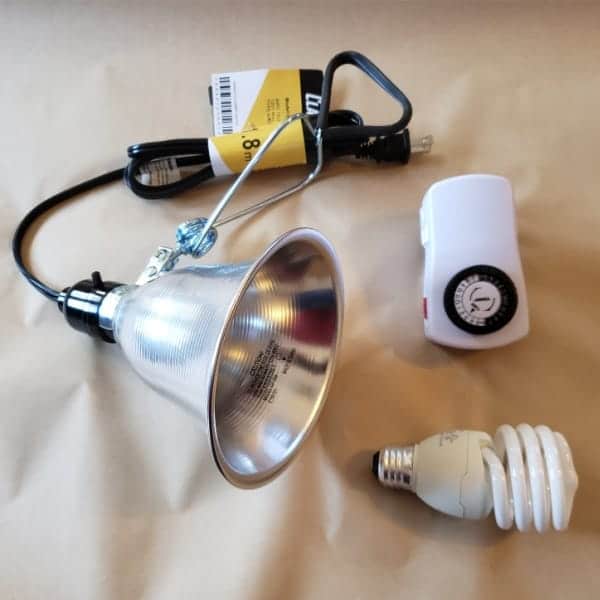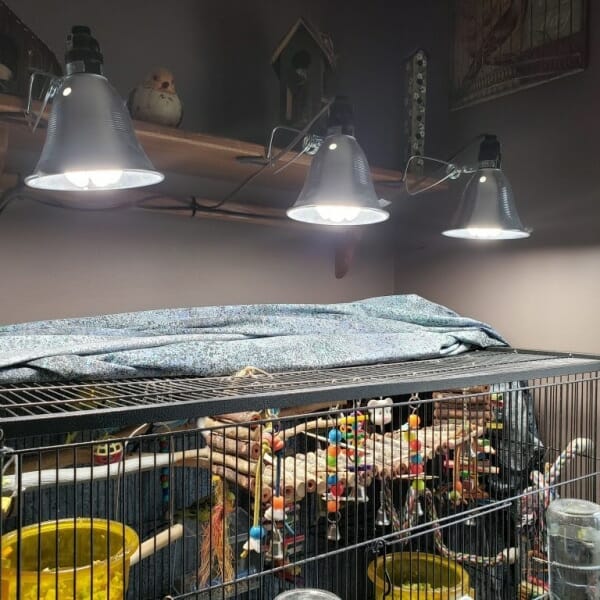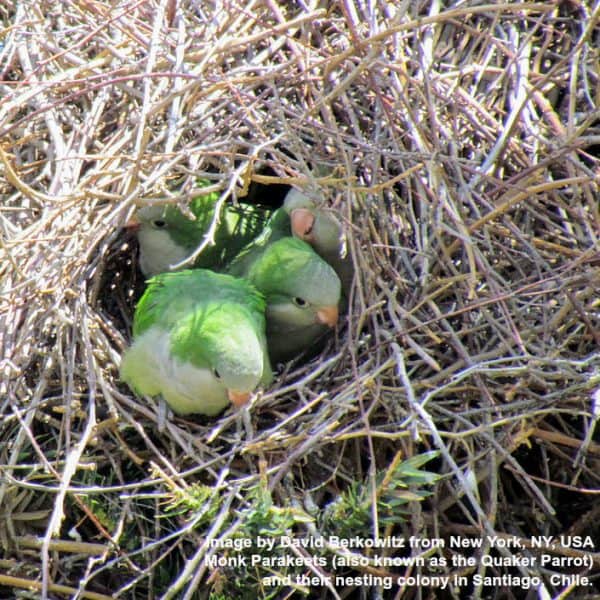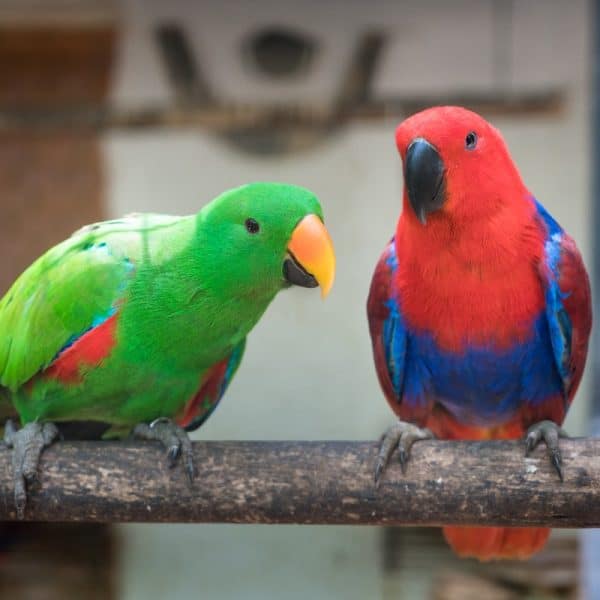
Is This a Proper Budgie Cage Set Up?
Last Updated on by Mitch Rezman
Is this a proper budgie cage set up?
First of all you do not indicate the bird’s lifestyle.
Will this be a solitary bird who spends a lot of time in the cage or will the bird be out of the cage a lot and basically used for sleeping?
If it’s going to be a solitary bird in this cage, the budgie is going to be one very unhappy bird and I’ll get to that in a minute.
The first thing I’ll note is that it is very dark in the cage.
Darkness is not good for any bird.
Your first task is to install a full-spectrum lamp no higher than 6 inches above the cage and place it on a timer cycling every 12 hours on and off.
Our budgie aviary is pretty wide so we use 2 but this will give you an idea
Birds process an enormous amount of data they receive from light.
Light tells them when to molt, breed and migrate if applicable.
You’re giving your bird bad data by not allowing it to have an equatorial light cycle which is part of its evolutionary expectations.
Let’s jump down to the bottom of the cage.
The single millet spray should not be on the ground as it will be pooped upon
That’s also way too much millet for single budgie, it should be cut into six smaller pieces and served as a single piece in a bowl on the floor of the cage to reduce the mess caused by the very light millet husks.
The rest should be refrigerated for freshness.
Your feeding dishes are fine but remember in the wild budgies are ground feeders
We have dishes for our (9) budgies both high and on the ground in the birdcage.
You have four dowel rod perches that run from side to side that should be removed.
They don’t do anything to challenge a budgies foot and restrict what little flight the bird might get although they can helicopter within a cage.
All psittacine birds should sleep on a soft rope (Booda) placed in the top one third of the cage.
There should be chewable wooden bird toys that a budgie can easily access throughout the cage.
Besides wood, consider coconut fiber toys, buri palm and with sea shells as well as leather and beads
[videopress OIPflafN]
Here is an overview here is a video overview of what I’m talking about on a larger scale
Please encourage your bird to use the bottom of the cage as much as they use the top to give them the most of amount of exercise they can get.
Your budgie will sleep towards the top one third of the cage and the cage should be covered nightly at “birdie bedtime”.
2 to 3 more perches will be fine.
Keep them short and not going across the cage in either direction.
I noticed a cuttlebone.
Cuttlebone is really only necessary if you have a breeding female. But they may still like it.
Females will have a brown cere (nose) and males will have a blue but not till about six months old.
We like to lay our paper on the bottom of the birdcage so we can pull out a single sheet of paper every day accelerating the birdcage cleaning process.
You’ll notice we’re using two Lixit Snapple water bottle kits but not all birds adapt easily so for the foreseeable future 2 to 3 months we will add water dishes so the bird are assured to have water and at some point will make the relationship between the Lixit Snapple water bottles.
Feel free to reach out if you need further assistance
[videopress zzvXeq2Z]
What if my budgie turns her head in her back feathers and sits quiet most of the time?
She also has a change in her voice.
She is bobbing her tail however.
She eats well and preens her feathers. I don’t have any vet near me.
What do I do now?
In spite of my 15 years of experience in providing advice for caged bird keepers, I am unable to diagnose bird illnesses, especially with such little information.
There is always a slight bob of the tail.
We don’t know the age or sex of the bird.
We don’t know the bird’s diet.
We don’t know what his or her poop looks like.
Budgies bob their tails for a dozen reasons.
Some say it’s a vitamin A deficiency.
This is how I learn about budgies
https://videopress.com/v/UYkulOnH
What I don’t know I will reach out to Dr. Ross
I am not an expert he is.
By the way, I can say with authority your budgie is bored and lonely because it’s alone and budgies are much happier in a mated or flocked environment.
I also would not try any of the remedies mentioned until you determine what if anything is so you’re treating the correct thing.
When was the last time anyone in this thread, weighed their bird?
[videopress UYkulOnH]
It’s a simple and benign way to find illness in birds.
Can two budgie/parakeet survive in NYC if you set it free? Would it affect anything?
Let’s give credit where credit is due.
Budgies had been around for tens of millions of years living only with their beaks feet and feathers – until humans decided birds were getting it all wrong.
Budgies are smart, they learn from each other and from other birds and although there are predatory birds budgies are actually better flyers than any of the birds mentioned.
Here’s a video of hundreds of thousands of budgies and a single hawk is unable to capture one.
Our first budgie Bacon actually got entangled tree across from the shop and that’s how she found us.
She had definitely been out for a while because she slept and ate a lot the first couple of days and then continued to get more and more ornery requiring a wing trim so she would not slam into the windows.
Is also a possibility that they could get swept away by strong wind current and then land in a much friendlier environment.
Here in Chicago, we have flocks of monk PARAKEETS that are able to survive the most brutal of Chicago winters.
If these are birds you are seeking to get rid of it would be best to rehome them.
There are many outstanding rescues in the New York area that would be more than happy to take in a pair of budgies.
They are exceptional pet birds we have six of them now. (oops as of 11/1/2018 we have 9 now)
Best of luck
Budgie’s cere went from blue to brown, he started ripping out feathers, vet gave him mite shot.
Today he is lethargic.
What could be wrong?
re: Your vet could not have been more stupid.
Mites can actually be found both externally and internally in pet birds.
They suck blood from your bird possibly resulting in anemia.
If you think it’s an external problem simply leave a white piece of paper at the bottom of the bird’s cage overnight.
Or hold the paper under the birds perch and rap on it hard to see if the red mites fall out onto the paper.
If you wake up in the morning and see mites on the white paper with the naked eye, bring a sample of them to your vet along with the bird.
Internal mites are known as “air sac mites” and must be treated orally or by injection so this vet knew something you didn’t or was acting on the side of caution.
Besides injections, might defense comes in powders, sprays and oral medications.
Female budgies have Brown ceres, male budgies have blue ones
Mites are EXTREMELY RARE to be found on parrots in captivity.
While aviary birds and birds such as finches and canaries are more susceptible to mites, indoor parrots almost never have issues with mites.
Actually, mites are more prevalent than you would think for indoor captive birds.
We know this because we get phone calls and emails on a regular basis requesting mite (ant/mosquito/bee/wasp) solutions.
Full transparency for the past 15 years I have operated one of the largest sites on the Internet specifically for captive bird care.
We’ve learned a lot traveling with our birds to a 300-acre campground on most weekends over those same 15 years.
I write about what I know to be true and accurate.
If it’s anecdotal, I will state that.
Interestingly enough birds like common house Finches in Mexico City will line their nests with used cigarette butts.
Somewhere along the way, these finches learned the benefit nicotine, the same stuff that is a natural insecticide of tobacco plants which keeps mites and other parasites out of nests.
Is it okay to feed a budgie parakeet black peppercorn?
Is it okay to feed a budgie parakeet black peppercorn?
Linda B, Owned and managed by three feathered friends
Answered Oct 20
Absolutely it is okay and in fact quite healthy to feed budgies black peppercorn and other spices. Black peppercorns are high in vital antioxidants and are super healthy for parrots and people alike.
Budgies and all the psittacines love spicy foods, and their bodies, like ours, regularly metabolize them. In fact, parrots have a much greater tolerance for spice and can chomp on a cayenne or habanero pepper without so much as a wince, as they lack capsaicin receptors that would make the experience unbearable to most of us humans and other mammals.
Black pepper contains piperine, a powerful cancer-inhibiting and cell-supporting and repairing antioxidant. Piperine also allows curcumin, the primary antioxidant in turmeric, to be more bioavailable (nutritionally available) in the body, so the two spices are great to pair together.
I sprinkle all kinds of herbs and spices in my birds’ wet foods, and sometimes they enjoy a simple treat of a few black peppercorns. You might want to check out my Quora answer on Do budgies like spices?.
MitchR’s response
Full transparency – I sell bird food
26 brands including Harrison’s, Roudybush, and Hagen – all the top lines.
I’m also a data guy
I took a quick survey and not one of the 26 brands of commercial bird food on our shelves contains peppercorns.
Even Harrison’s Lifetime Pepper only contains red pepper powder.
So we have to ask if these global pet food companies are spending millions of dollars a year on nutritional research but are not using peppercorns, why is that?
Two other concerns would be peppercorns possibly causing heartburn while in the crop up to six hours.
Peppercorns may be bulky enough to satisfy the bird’s hunger but cannot satisfy a captive bird’s nutritional needs.
If you are seeking safe antioxidants try decaf green tea, used by most zoos blended into most of the resident’s foods.
Mark Hagen founded the Hagen Avicultural Research Institute 30 years ago housing 250 pairs of wild caught and domestic parrots
are facility is used to research bird food (among other activities)
If Mark does not include peppercorns in his unique formulations, I would advocate not serving peppercorns to any captive bird.
Just because someone’s birds happen to like a particular food or spice does not mean it is safe.
Best
MitchR
Author Profile
Latest entries
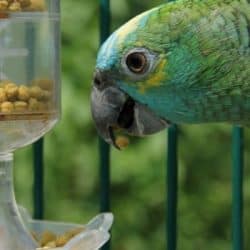 Feeding Exotic BirdsDecember 29, 2025How to Switch or Convert Your Bird From Seeds to Pellets: Real-Life Case Studies and Practical Guidance
Feeding Exotic BirdsDecember 29, 2025How to Switch or Convert Your Bird From Seeds to Pellets: Real-Life Case Studies and Practical Guidance Feeding Exotic BirdsDecember 16, 2025A Practical, Budget-Smart Guide to Feeding Birds Well
Feeding Exotic BirdsDecember 16, 2025A Practical, Budget-Smart Guide to Feeding Birds Well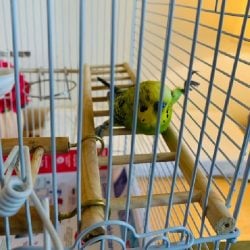 Bird EnviornmentsDecember 7, 2025Understanding Budgie Cage Bar Orientation: Myths, Realities & Practical Solutions for Vertical-Bar Bird Cages
Bird EnviornmentsDecember 7, 2025Understanding Budgie Cage Bar Orientation: Myths, Realities & Practical Solutions for Vertical-Bar Bird Cages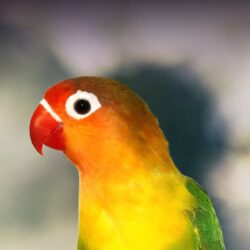 Feeding Exotic BirdsDecember 5, 2025How Dr. T.J. Lafeber Rewrote the Future of Pet Bird Nutrition
Feeding Exotic BirdsDecember 5, 2025How Dr. T.J. Lafeber Rewrote the Future of Pet Bird Nutrition
